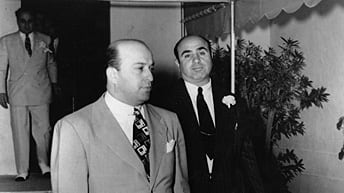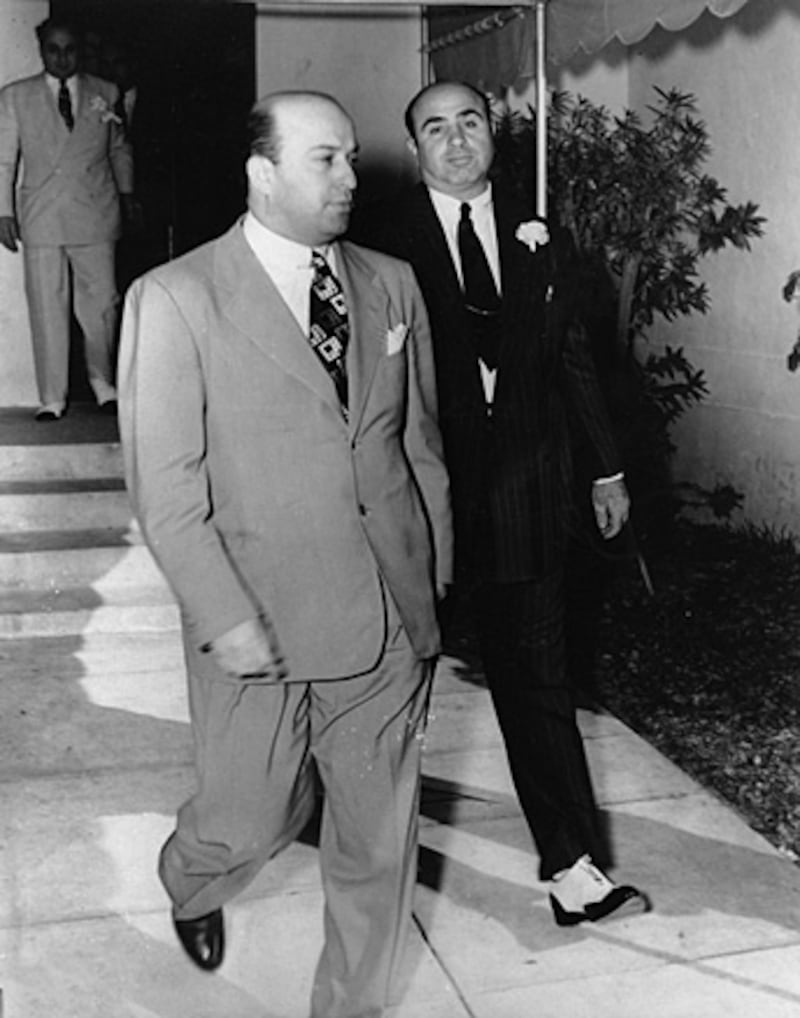
Chicago mob boss Al Capone (right) first visited Miami Beach in 1928. He told friends it as “the sunny Italy of the New World.” At the waterfront mansion he soon bought, opera great Enrico Caruso provided the entertainment for his first party. Snobby Beach elitists tried and failed to get Capone kicked out since they charged his home was a haven for “gangsters and racketeers.” Except for a stint in prison, he stayed until his 1947 death. During his final years, crippled with syphilis-induced dementia, Capone was wheeled out to the water’s edge outside his mansion, and then quickly rolled inside when sightseeing boats drew near.
AP Photo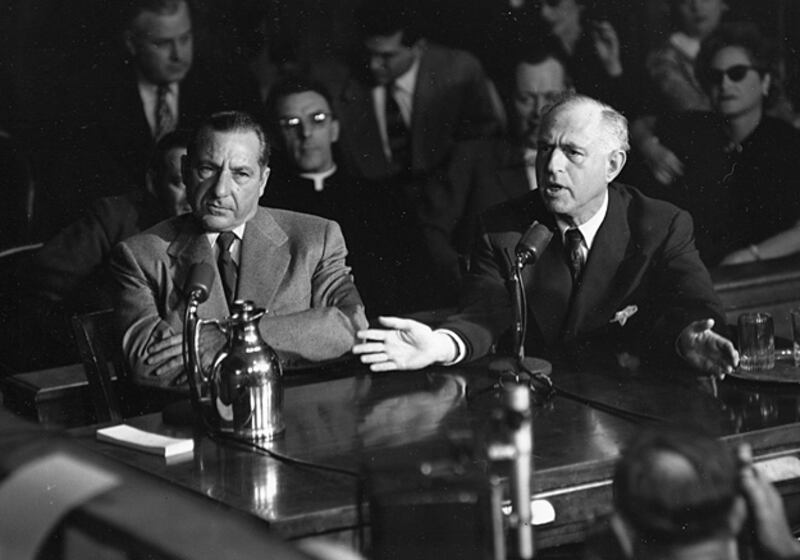
In 1950, Tennessee Senator Estes Kefauver, chairman of the Special Committee on Organized Crime in Interstate Commerce, came to Miami. The Kefauver committee—which concluded that Miami Beach was overrun with more hoodlums than New York, Philadelphia, Detroit, Cleveland, and Chicago—laid out a devastating indictment of the corrupt links between local officials and mobsters, including Frank Costello (left). The evidence showed that the town’s illegal trades flourished largely because of police corruption and politicians who sanctioned it, believing the associated vices of gambling and prostitution were great for tourism. The committee concluded that "there is a gentleman's agreement [among the mobsters]... not to infringe on the activities of each other." Kefauver was so outraged at the excesses that he wrote an article for the Saturday Evening Post titled “What I Found Out About the Miami Mob.”
AP Photo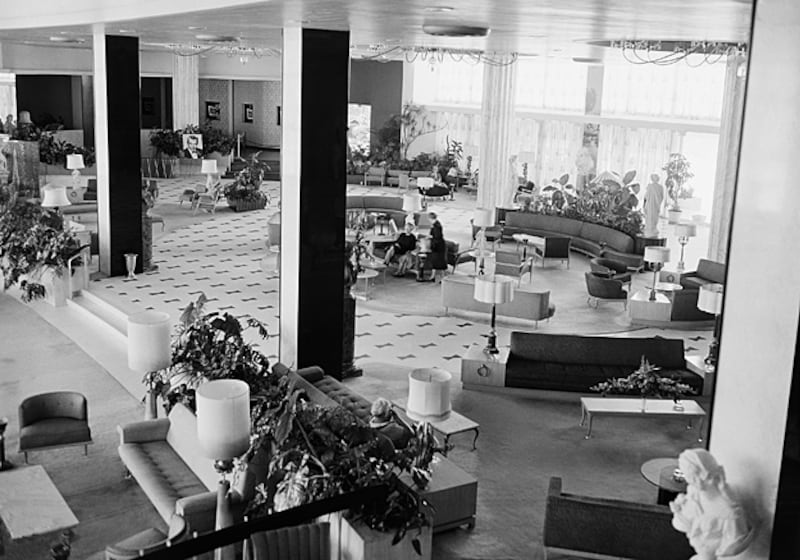
The Rat Pack—Frank Sinatra, Dean Martin, Sammy Davis, Jr., Peter Lawford, and Joey Bishop—hung out at the over-the-top Morris Lapidus-designed Fontainebleau Hotel starting in the 1950s. It was there that Sinatra introduced Chicago Mob boss Sam Giancana to Judith Campbell Exner in March 1960. The month before, he had introduced her to then-Senator John Kennedy at the Sands in Las Vegas. Exner became a mistress of both the president and the mobster. FBI chief J. Edgar Hoover often cited a female informant who had met Sinatra and gangster Joe Fischetti at the Fontainebleau and believed that the singer had "'a hoodlum complex.'" The FBI often monitored Sinatra’s sold-out Fontainebleau shows to see which mobsters were visiting Miami.
AP Photo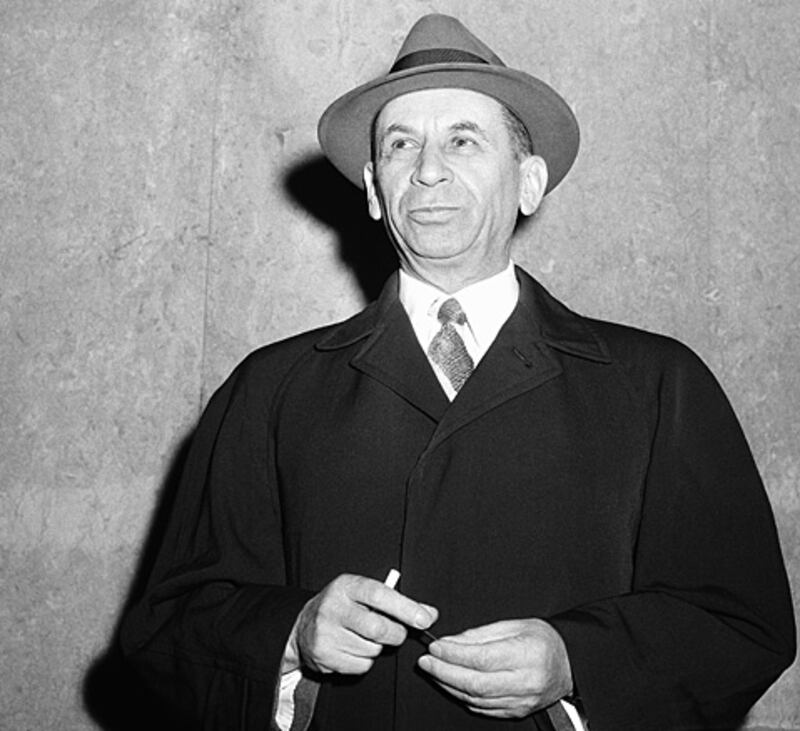
Meyer Lansky—known as the "Mob's Accountant" or the “Jewish Godfather”—was instrumental in creating an American "National Crime Syndicate." Based in Miami, Lansky, with his tentacles in hundreds of hotels, bars, jukebox operations, and waste disposal companies, kept a low profile in contrast to some high-rolling mobsters. He lived in a modest Miami Beach condo and his headquarters was a smoky card-playing room at the tourist-class Singapore Hotel on Collins Avenue. A small man, in baggy pants, Lansky was often seen walking his pet Pomeranian, shuffling along usually accompanied by an elderly man, who was either a friend or a bodyguard past his prime.
MZ / AP Photo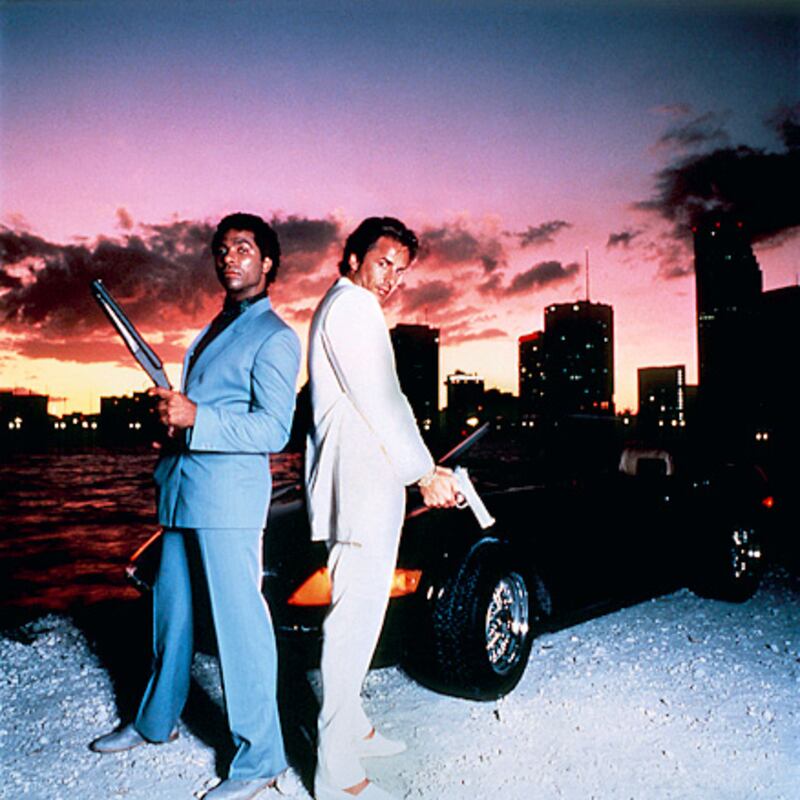
In 1984, Miami Vice premiered on NBC. The show’s impact was instant. It delivered a glitzy and colorful version of the Art Deco District into millions of middle-American homes. Not everyone liked it. Police officials mostly criticized it and the tourism board was concerned that a show about the drug trade might adversely affect visitors’ perceptions of the town. But the Miami Herald got it right when it said the MTV-styled show had the “most graceful, cinematically slick scenes ever done for television,” and while it was packed with violence, “the cities of Miami and Miami Beach are made to seem a multicultural metropolis of pastel colors, aquatic beauty and vibrant nightlife; they have never looked better.” The show redefined Miami Beach’s image from God’s Waiting Room for the elderly to a beautiful version of America’s Casablanca, slightly dangerous and very alluring.
Universal / Everett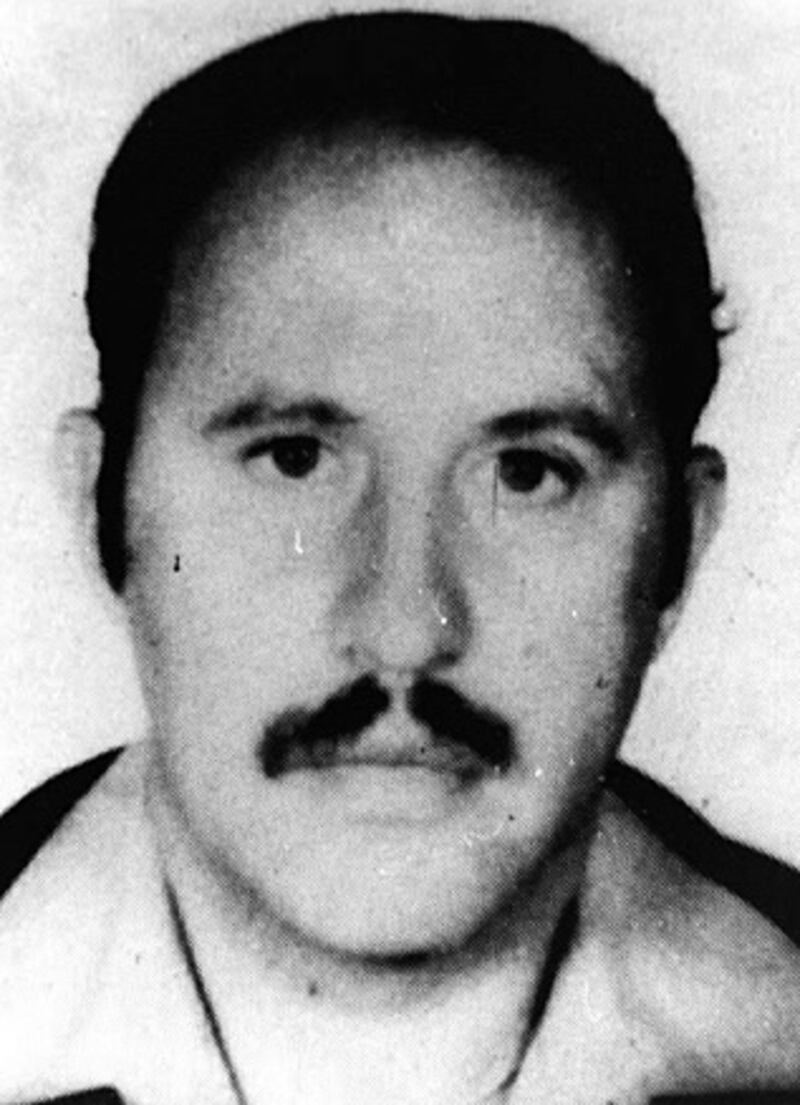
The Cocaine Cowboys were an unparalleled American tale of drugs, violence and billions of dollars that became Miami’s biggest industry for nearly a decade from the late 1970s through the 1980s. Cocaine built Miami’s skyline and created a boom in waterfront mansions, mega yachts, and luxury cars, all paid for in cash, at a time when much of the country was mired in a recession. From brazen gangland shootings at public malls to the influence of Medillin kingpin Pablo Escobar to to the brutal reigns of terror by Griselda Blanco de Trujillo, the Godmother of Cocaine, the drug trade permanently changed Miami. It made the city America’s murder capital and also created an enormous underground economy that corrupted police forces and government offices like a virulent plague.
Files, AFP / Getty Images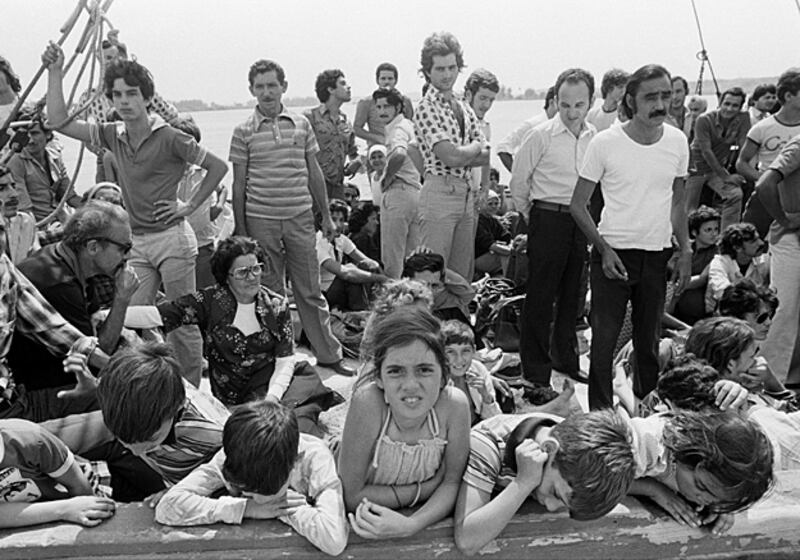
In 1980, Jimmy Carter offered to accept 3,500 Cuban refugees, and Castro used the opening as an excuse, as he told his brother, to “flush my toilets.” During the five-month Mariel Boatlift, 125,000 Cubans arrived in the so-called freedom flotilla. Among the newcomers were 24,000 with criminal records, 5,000 who were “hardened criminals,” and more than 100 who had murder convictions. Among the rest were honest, hard-working refugees, but also a large number of prostitutes, delinquents, and some just released from mental institutions. The Marielitos, as they were called, changed Miami Beach’s demographics overnight, pushed the county’s unemployment from 5.7 percent to 13 percent, taxed social services to the breaking point and exacerbated racial tensions.
Jacques Langevin / AP Photo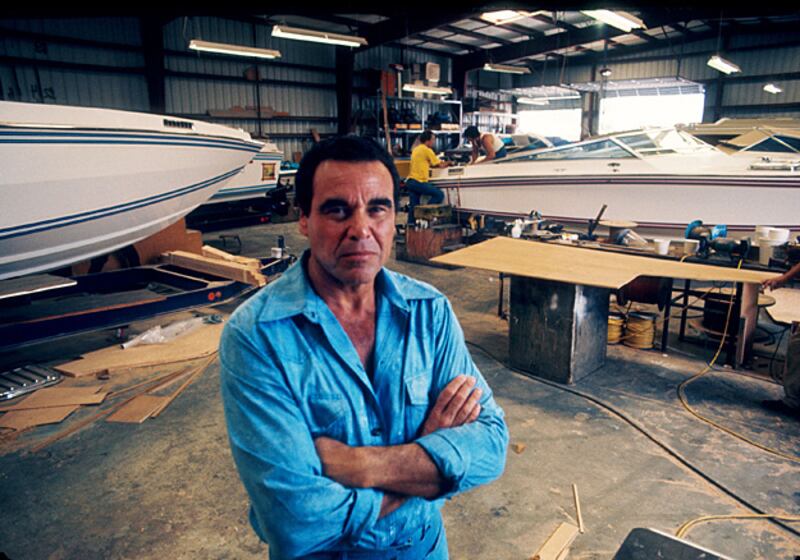
The 6’2”, 215 pound, Don Aronow was a former Coney Island lifeguard who was once invited to take a screen test for Tarzan. A daredevil, he became a world champion speedboat racer and turned out to have a natural flair for design. He developed four speedboats that redefined the powerboat industry: Formula, Donzi, Magnum, and, Cigarette, the last and most popular named after a Prohibition-busting boat that ruled the New York shoreline in the 1920s. Aronow, who counted as his clients the kings of Spain, Sweden, Jordan, and the Kuwaiti emir, also had a lock on the South Florida drug trade. He was gunned down, outside his headquarters, in 1987, in a hit paid for by a rival boatmaker.
John Pineda, Zuma / Newscom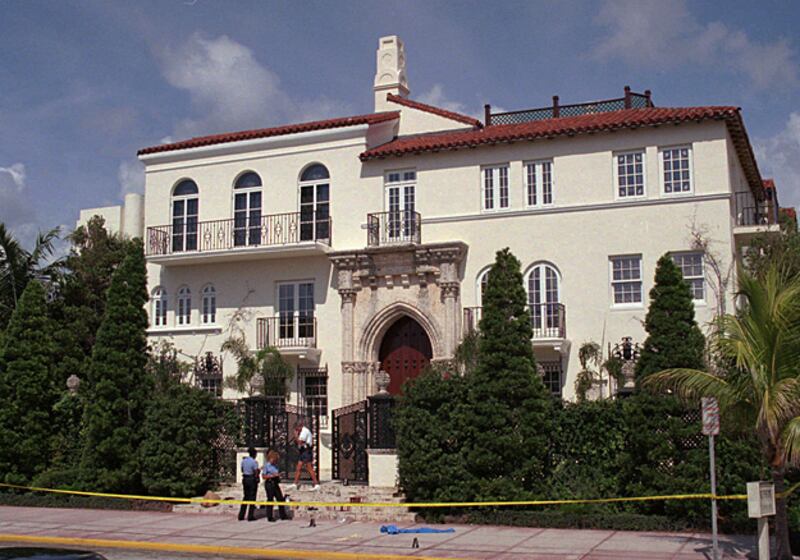
In 1997, fashion designer Gianni Versace was gunned down on the doorsteps of his Ocean Drive mansion, Casa Casuarina, by a gay spree killer, Andrew Cunanan. Cunanan shot himself to death eight days later. Police, after a massive manhunt, and in the glare of worldwide publicity, found Cunanan’s body in a houseboat docked in mid-Beach. Versace’s former house, now an exclusive hotel, is still besieged daily by tourists, all wanting a picture at the spot where the fashion icon was murdered.
Gregory Smith / AP Photo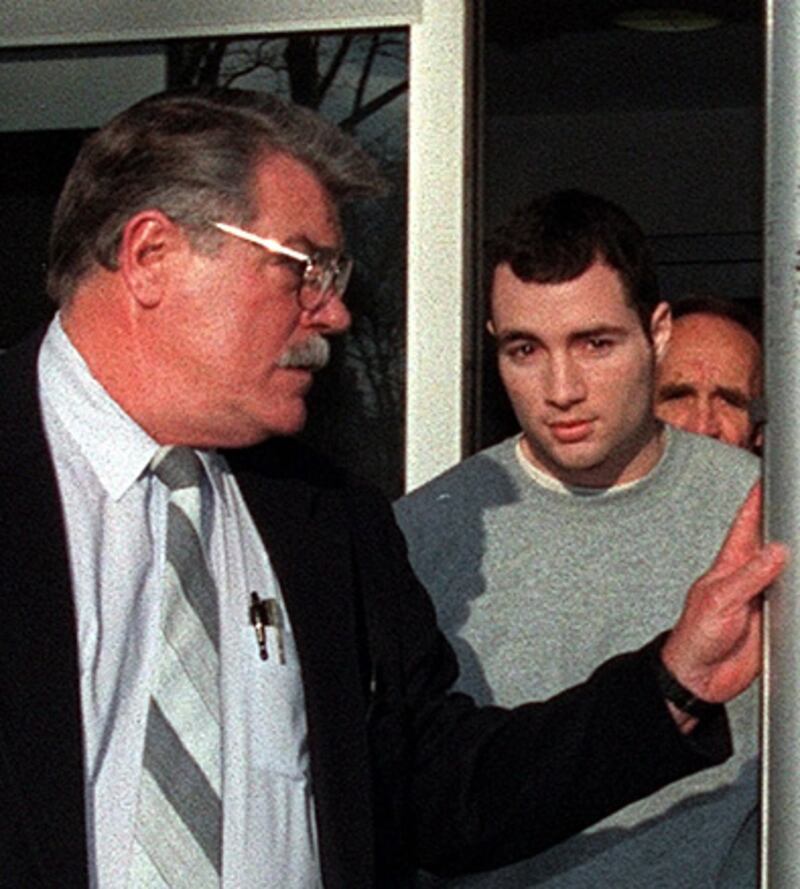
Chris Paciello, a Brooklyn-born hoodlum who moved to South Beach and fell into the right circle of friends, became the “King of Nightlife” in the mid-1990s. One of Madonna’s rumored lovers, and a friend to Sylvester Stallone, Cher, and Mickey Rourke, Paciello was arrested for murder, robbery, and racketeering in 1999. He struck a deal with federal prosecutors to testify against two Mob kingpins in return for a reduced sentence. Today, he’s back in the nightclub business in Los Angeles.
Diane Bondareff / AP Photo